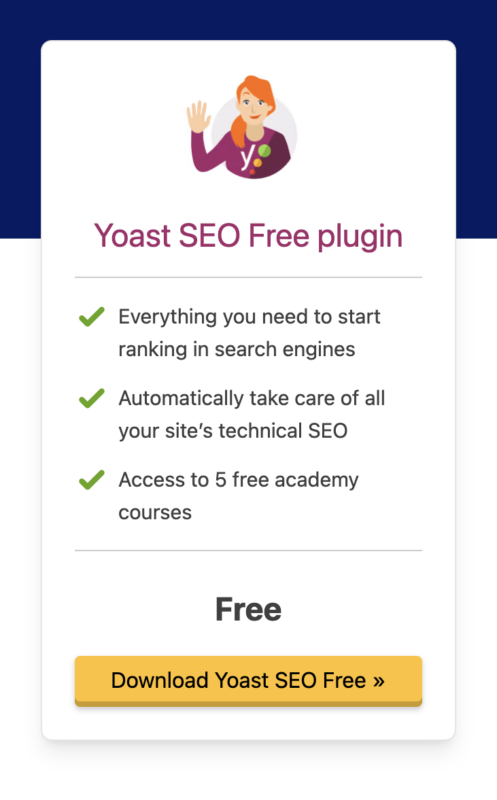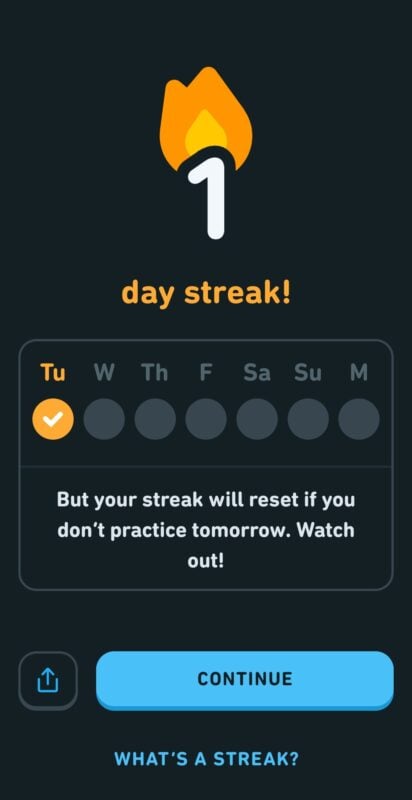UX copywriting: 5 writing tips to improve user experience

At Yoast, we often advise that you should write for your users and not yourself. Why? Because they’re the ones who visit your site and read your content. But did you know there’s a specific type of writing that focuses solely on creating a good user experience? It’s called UX copywriting. In this blog, we’ll explain what it is, and why you should start implementing it too. Finally, we’ll give you five tips so you can get started!
What is UX copywriting?
Okay, first things first. UX copywriting stands for user experience copywriting. In other words: Text that makes interacting with your website or product as easy and seamless as possible. It guides the user through your website or interface, and helps them navigate your product. More specifically, UX copy can be the text on menu labels and buttons, but also chatbot messages, error messages and success messages. For example: “You’ve now completed the SEO workout. Good job!”
If you want to know more, you can read our article on what UX is and why it’s important.
What’s the difference between copywriting and UX copywriting?
Good question! The main goal of copywriting is to boost sales and increase traffic to your website. Basically, you want to attract new customers and persuade them to buy your product or service. UX copywriting, however, is not about selling or persuading. You want to improve the user experience by guiding them quickly and effortlessly through your website or product.
Why you should focus on UX copywriting
As a website owner, you probably have a goal for your website. This could be to attract more visitors, generate more leads or sell your product. In order to achieve this, people have to understand how to navigate your website and your product. It’s great if they find your site, but if they don’t know how to sign up for your email or buy your service, then you’re missing out! That’s where UX copywriting comes in. It helps and guides people, so they know how to use your website.
5 tips to improve your UX copywriting
Now you understand what UX copy is, and why you should focus on it. The next step: Actually writing it! Here are five tips to help you improve your UX copywriting.
1. Your writing needs to be clear
This sounds like a no-brainer, but it’s important to remember. Your users should understand what action they’re taking when they click on a button, what it requires of them, and what the outcome of clicking will be. With UX copywriting, you shouldn’t ‘trick’ your customers. If your button says “Try for free”, then users should really be able to try it for free.

2. Be concise
Don’t use too many words! Think about the last time you installed a new app or program. You wanted to get through the setup as quickly as possible, right? Chances are, it’s the same for your users. Besides, a wall of text will not only seem like a chore to read, but too many words can also confuse your users. Instead, try to convey the message as concisely as possible. This doesn’t always mean to use as few words as possible. Sometimes it’s about only using words that have a function. A simple “Wrong password” can be sufficient.
3. Don’t write like a robot
Because you’re not! Unless your brand’s mascot is a cute little robot like Discord, it’s better to write like a human. Plus, other humans are more likely to understand and connect with your writing. A great example of this is Duolingo. Instead of writing: “All progress will be lost if you close this window. Are you sure?”, users see this message: “Wait, don’t go! You’re right on track. If you quit now, you’ll lose your progress.”. Sounds more human, doesn’t it?
Let’s look at another Duolingo example.

This is a good example of fun and clear copywriting. First, the button on the lower half of the screen is clear and concise. Second, below the blue button is a helpful link for users who don’t know what a streak is. And third, the white text explains in a fun way that users also need to practice tomorrow or else they’ll lose their streak. This message is also visualized with the calendar. That’s what you call good UX design and copywriting!
4. Put yourself in your user’s shoes
It isn’t UX copywriting if you aren’t thinking about your user every step of the way. Ask yourself: What does the user want? What could they be worried about? How can I improve their experience? Try to look at your product or website from their point of view.
For example, if your user is filling in personal information, they might be worried they can’t change it later on. By adding a simple “Don’t worry! You can change this information later” message, you’ll be taking away a lot of concerns and improving the user’s experience.
5. Be inclusive
Imagine you just downloaded a new app. You’re excited to use it, but as you’re setting it up, the text doesn’t address you at all. What’s worse, when you have to fill in personal details, your identity is not even an option! That’s bad UX writing. You shouldn’t exclude people, whether it’s for their gender, age, ethnicity, sexual orientation, etc. Especially for languages that use different forms depending on gender, it’s good to be aware of this.
Good news: the Yoast SEO Premium plugin now offers an inclusive language check! This feature reads your texts and checks if you’re using words that don’t discriminate people based on age, appearance, race, disability, gender, and much more.
Conclusion: UX copywriting is important
Creating a pleasant and easy experience for your users is more important than ever. Especially if you work in a field with a lot of competition. Even if your product or website is amazing, if people don’t know how to use it, they won’t. So take a look at your product from a user’s point of view. Write copy that will smoothly guide them through your product, while anticipating any worries they might have. Just a few words can already make a huge difference!
Read more: SEO copywriting: The ultimate guide »

